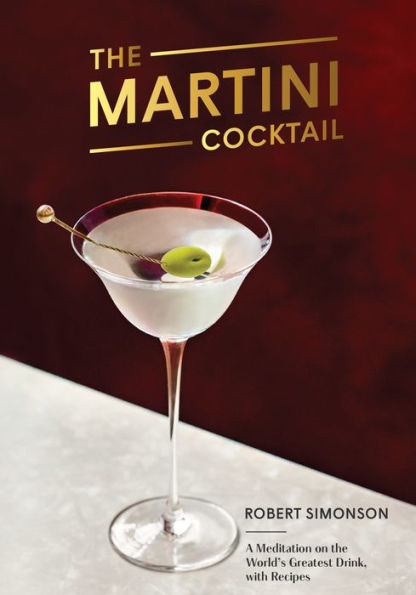Read an Excerpt
Introduction
Bewildering Depths
As a young man, back in 1991, with little thought of devoting my time to writing prose poems to mixed drinks, I was—completely without justification, mind you—instinctually fussy about Martinis. One night, while enjoying a good meal at an elegant country inn in Vermont, I ordered a gin Martini and then waited, impatiently, as the completed cocktail sat on the service bar getting warmer and warmer by the second. When the youthful waiter finally brought the drink to my table, beads of condensation were streaming down the glass. The cocktail had an unappetizing, lukewarm look to it. It made me shudder. Mustering up a starchy hauteur I didn’t know I possessed, I turned to the poor waiter and said, “Excuse me, but I think this is undrinkable.” He took it back, like a corked bottle of wine.
I don’t blame my youth for my imperious behavior. I blame the Martini. The drink’s outsize reputation does things to a human’s mind.
Gin, vermouth, sometimes bitters, lemon twist or olive, and lots of opinions. Those are the ingredients of a Martini. But the last item is the most important. It’s the one that keeps us talking about a drink that is nearly 150 years old. Something about the Martini gets people worked up, certain that the world might have a fighting chance at decency if only people would adhere to their particular recipe.
I’m pretty certain that you out there, reading this sentence, think you know a little something about what makes a good Martini, even if you’ve never had one. But, let me tell you, everything you know about the Martini is wrong.
Think you know who invented the world’s most famous cocktail? You’re wrong. Think you know where and when it was created? Wrong again. Insist that it must be made with gin? Nope. Vodka? Uh-uh. Positive it should be stirred; should be shaken; properly takes a lemon twist as garnish; actually asks for an olive; requires a portion of dry vermouth in order to bear the name; should be kept well away from vermouth at all costs; calls for orange bitters; doesn’t need orange bitters; can be served on the rocks; should only be served up; should be presented in a Martini glass; demands a coupe? Wrong. All wrong.
Or, right, actually. The thing is, when it comes to the Martini, everyone thinks they’ve got the straight dope. But the certain don’t always agree—sometimes don’t ever agree. So some of these know-italls must be wrong. But which ones? Thus, everyone is wrong about the Martini, because everyone is right about the Martini, and everyone can’t be right. Get it?
No? Well, I don’t blame you. It’s a confusing subject, but also a rich one. So rich that whole books have been devoted to the drink. The volume you hold in your hands is hardly the first. In 1981, Lowell Edmunds, a classics professor at Rutgers University, gave the cocktail the thesis treatment in his book The Silver Bullet: The Martini in American Civilization. Nobody blinked; nobody thought he was crazy. Of course, a man with a doctorate would take the Martini seriously. Of course he would. One decade, the 1990s, produced a veritable boom in Martini books, all hoping to cash in on the Martini revival then underway.
The drink seems to have held an unyielding grip on the American imagination from the very first. Recipes only began to appear in cocktail manuals in the 1880s. But, by then, it was already an object of fascination. On July 30, 1887, the Long Island Wheelmen (that is, bicyclists) gathered on Fulton Street, in downtown Brooklyn, for one of their monthly smokers. There was entertainment, and before it began, a Captain Charles Luscomb assumed the podium. “Search,” he declared, “if you will, the blazing coruscations of Tiffany’s; wander amazed through the art galleries of the metropolis; aye, even sample the bewildering depths of the ‘Martini cocktail,’ and you will find nothing that can compare with, meet, or equal the elegant tribute that is now about to be bestowed upon you.”
Just a few years old, and the Martini was already the equal of Tiffany’s jewels. Not a bad start.
The planet has never ceased plumbing those bewildering depths. Sometimes that only means getting to the bottom of the glass, and then another and another. Many other times, though, the dive is about getting to the bottom of the drink conceptually, philosophically. Why do we like the Martini so much? Why do we drink them so often? Why do we fight over it as if it were some vague-ish amendment to the Constitution, the interpretation of which the Founding Fathers left to future generations to work out?
I don’t promise to answer these questions any better than previous generations. (After all, previous generations weren’t very good at it, either, or we wouldn’t still be arguing about the matter.) But I promise to give the Martini a good going over. And there will be opinions. Lots of opinions.



